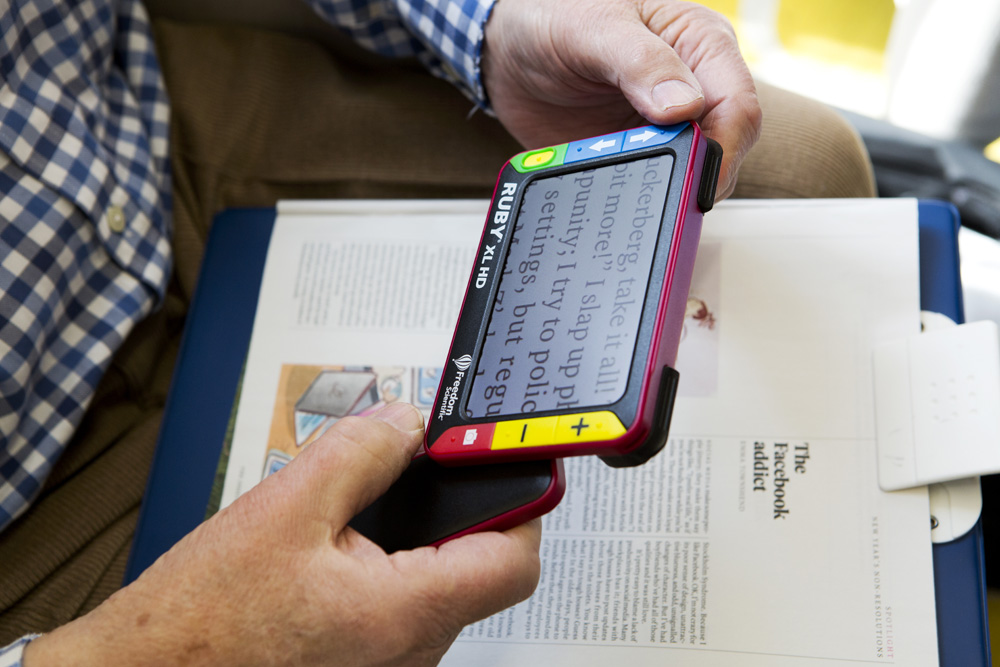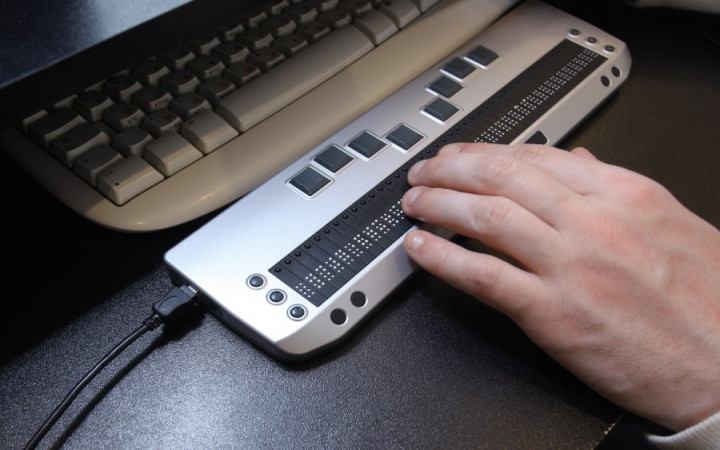Speech-to-Text Devices for Low Vision: Enhancing Ease of Use
Wiki Article
Discover Ingenious Devices Designed for the Visually Damaged
The advancement of cutting-edge devices for the aesthetically damaged represents a considerable improvement in ease of access and independence. Technologies such as clever glasses with AI capacities and mobile applications developed to supply acoustic descriptions are reshaping everyday experiences for customers.Smart Glasses for Navigating

Smart glasses made for navigation are transforming the method aesthetically damaged people interact with their environment. These sophisticated gadgets use a mix of electronic camera modern technology, synthetic knowledge, and auditory comments to supply real-time details concerning environments. By utilizing challenge discovery systems, wise glasses can inform individuals to possible dangers, enabling much safer movement in both unfamiliar and acquainted setups.
The assimilation of GPS innovation even more improves navigation capabilities, allowing customers to obtain acoustic directions as they relocate. This hands-free approach not just cultivates self-reliance however also equips aesthetically impaired individuals to browse metropolitan landscapes with raised self-confidence. In addition, several clever glasses are furnished with functions that identify spots and road signs, giving contextual details that improves the user experience.
Moreover, the growth of these gadgets is constantly advancing, with companies functioning to boost the accuracy of things acknowledgment and expand the series of navigational functions. As clever glasses come to be a lot more economical and accessible, they hold the prospective to significantly change daily life for aesthetically impaired users. Inevitably, these ingenious devices represent an essential step towards inclusivity, offering enhanced movement and a better sense of freedom for people navigating the globe around them.

Mobile Apps for Daily Living
Exactly how can mobile applications enhance the every day lives of aesthetically impaired individuals? Mobile applications are changing the method visually damaged individuals navigate their atmospheres, manage day-to-day jobs, and access details. These applications supply vital support with various capabilities, promoting independence and improving lifestyle.Several cutting-edge mobile apps are developed particularly for daily living. Applications like Be My Eyes connect visually damaged customers with sighted volunteers through video phone calls, allowing them to obtain real-time support with jobs such as reading labels or browsing unknown spaces. Likewise, Seeing AI, established by Microsoft, uses fabricated knowledge to describe environments, read text, and determine items, properly changing a smart device into an effective tool for everyday assistance.
In addition, navigating apps customized for the visually impaired, such as Aira and BlindSquare, supply audio-based instructions and ecological details, making it possible for users to traverse their environments safely and confidently. Beyond navigating and prompt help, mobile applications also support company and job management, with features that help users set pointers, create to-do listings, and track visits. In summary, mobile applications serve as crucial sources, encouraging aesthetically damaged people to lead even more independent and satisfying lives.
Wearable Technologies for Help
Empowerment with innovation is progressively apparent in the realm of wearable gadgets developed to aid visually damaged individuals. These cutting-edge devices integrate effortlessly into life, enhancing navigating and supplying important comments to customers. Smart glasses geared up with electronic cameras can identify faces and read text out loud, enabling individuals to interact more confidently in social and professional settings.An additional significant development is the use of haptic comments systems in wearable tools. These systems utilize vibrations or various other tactile signals to convey information about the user's setting, such as obstacles or modifications in surface, boosting flexibility and safety. Wearable modern technologies additionally consist of wristbands that connect to smart devices, signaling users to notices via subtle vibrations, therefore improving connection without dependence on aesthetic hints.
As these innovations remain to evolve, they are not only boosting freedom for aesthetically impaired individuals however additionally fostering a greater sense of incorporation in society. By bridging the gap between obstacles dealt with in daily living and the potential for autonomy, wearable modern technologies act as pivotal devices in the pursuit for equality and empowerment for those with visual disabilities.
Audio Description Devices
Audio summary tools play an important role in boosting accessibility for visually damaged people, giving them with the ability to engage with visual media. OCR devices for the blind. These tools provide narrated descriptions of essential visual aspects in movies, tv programs, and live efficiencies, making sure that individuals can completely comprehend the context and emotions conveyed through visualsSound description can be integrated into numerous systems, consisting of streaming services, cinema screenings, and live movie theater. Several preferred streaming solutions now include audio summary as an access attribute, enabling audiences to pick it easily. Along with traditional media, specialized apps additionally exist, supplying audio descriptions for art exhibitions, galleries, and various other cultural occasions.
The efficiency of audio description depends upon the skill of the narrators, that have to share visual details succinctly without taking away from the original sound. Technologies in this field are also leading the way for more personalized experiences, where customers can change the degree of information and pacing according to their preferences.
Braille Innovations and Devices
Braille devices and innovations have actually significantly changed the method aesthetically impaired individuals engage with text and details. Modern developments have actually led to the growth of flexible devices that improve proficiency and self-reliance amongst individuals.
Moreover, portable Braille notetakers incorporate standard Braille input with modern capabilities, helping with note-taking, organizing, and file editing and enhancing on the go. Voice-activated assistive devices. These compact tools frequently include text-to-speech capabilities, connecting the void in between Braille and auditory info
Furthermore, innovative Braille Speech-to-text devices for low vision printers have arised, allowing customers to produce Braille labels, papers, and instructional materials efficiently. This availability cultivates greater participation in academic and specialist environments, ultimately promoting inclusivity.
Moreover, study right into smart Braille technologies remains to broaden. Tools that include expert system are being explored to offer real-time navigating help and contextual details, boosting the customer experience in varied setups. On the whole, these innovations reflect a commitment to equipping visually damaged people with modern technology, guaranteeing they can quickly gain access to and involve with the globe around them.

Final Thought
The advancement of cutting-edge devices for the visually impaired significantly improves freedom and quality of life. These modern technologies not just foster higher addition however likewise promote autonomy in day-to-day tasks, inevitably adding to a much more easily accessible and equitable society for visually damaged individuals.As smart glasses come to be a lot more economical and accessible, they hold the possible to substantially transform day-to-day life for visually damaged users. Mobile applications are reinventing the method visually damaged individuals browse their atmospheres, manage day-to-day tasks, and access details. Applications like Be My Eyes connect aesthetically impaired customers with sighted volunteers by means of video telephone calls, enabling them to receive real-time help with tasks such as reviewing labels or browsing strange rooms.Additionally, navigation applications tailored for the aesthetically impaired, such as Aira and BlindSquare, use audio-based directions and ecological information, making it possible for individuals to traverse their environments safely and with confidence.The development of cutting-edge tools for the aesthetically impaired dramatically enhances freedom and quality of life.
Report this wiki page